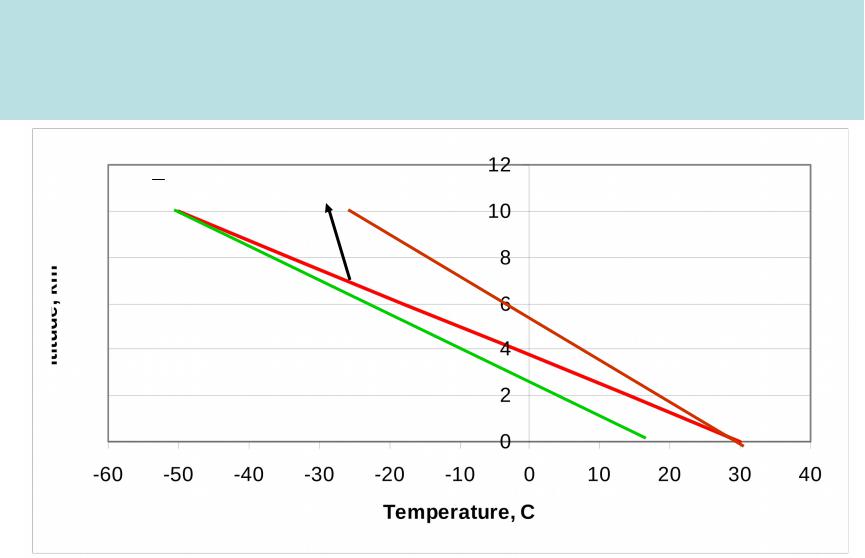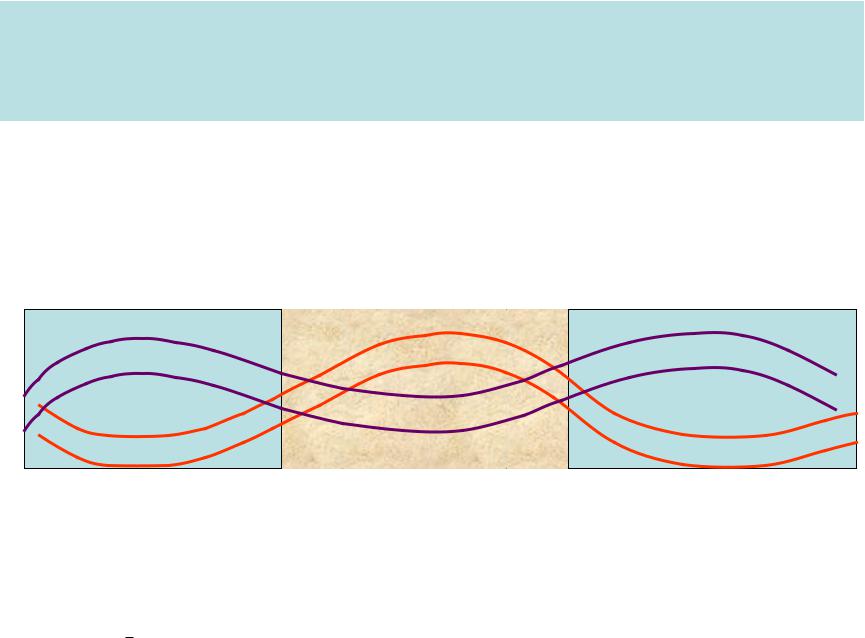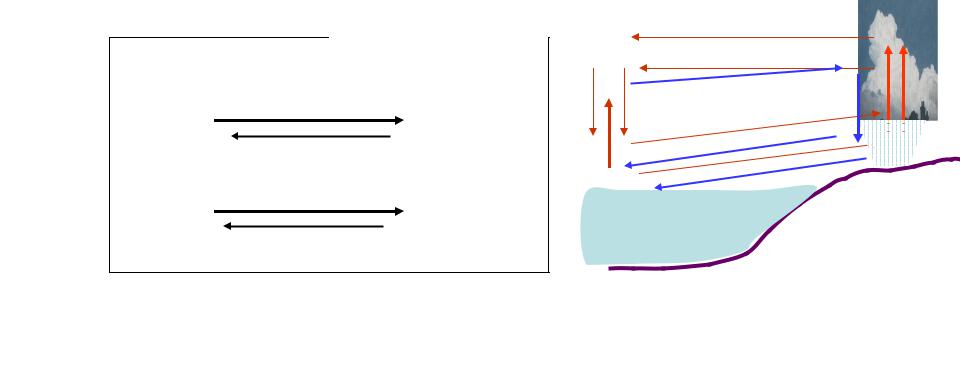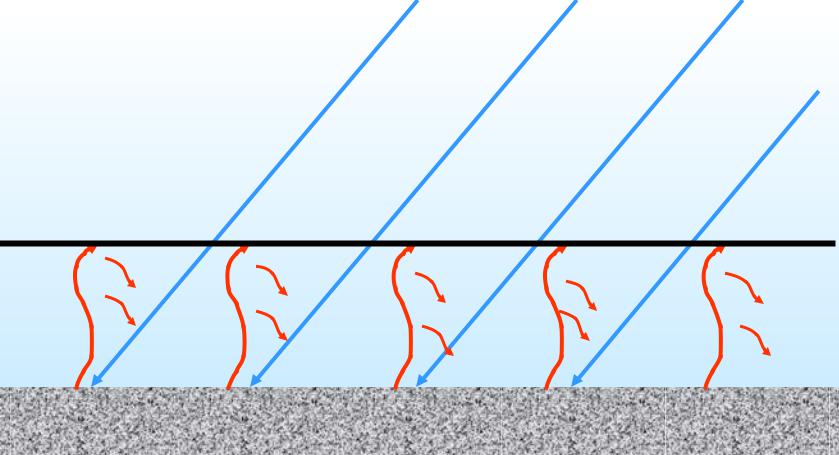

Thermal regime of the atmosphere
Zonal temperature field
(ZTF)
Averaging air temperature along every latitude, we obtain ZTF. The main feature of this field is the constancy of the temperature at every point of a latitude.
Although in reality it is not the case, but for |
|
better understanding of the temperature |
|
regime, presentation temperature field in this |
|
manner is very convenient. |
1 |

t n o r f l a c i p o r t b u S 



t on r rf a l Po
t n o r f c i t c r A
Arctic front forms in the cold seasons only
This distribution of the zonal temperature is typical for the Northern Hemisphere
2

Vertical temperature distribution (lapse rate)
0,8Typical for West Africa
|
|
0,65 |
|
|
0,55 |
|
|
||||
Average over globe |
Average over tropics |
||||
Lapse rate is subject for temporal and special variation.
3

Tropopause height and air temperatures near the tropopause.
latitude |
Tropopause height |
Temperature |
|
0 - 10 |
16 – 18 km |
-76 - |
-82°C |
50 - 60 |
9 – 10 km |
-40 - |
-55°C |
Very high position of the tropical tropopause is believed to be due to the fact that here the eddy exchange is much more intensive than that in extratropical regions.
Discontinuity of the tropopause over subtropical regions so far has no satisfactory explanation.
Over Antarctic, at the end of the winter and beginning of spring (August – November) tropopause disappears.
4

Real temperature distribution
Real temperature field is more complicated and it is quite different than that of the “zonal” one for the reason that the position of the continents and oceans are not regular with respect to latitudes.
Cold surface |
Cold surface |
|
|
Hot surface |
Cold surface |
||
|
|||
Warm surface |
Warm surface |
||
|
|||
Ocean |
Land |
Ocean |
|
|
|
Summer: Land surface warmer than that of water (ocean, sea, lake). Therefore, the air temperature over land is higher than over water surfaces.
Winter: Situation is reverse.
5

Periodic and irregular temperature variations
Temperature field is subject for diurnal and annual variation. That is periodical temperature variation.
Reasons for periodical |
A |
A |
Periodical temperature |
|
temperature variation |
Ocean |
land |
variation is better |
|
are eddy mixing and |
ATropics |
AM .L. |
expressed in tropical |
|
region. |
||||
radiation. |
|
|
Periodical temperature variation over mid and high latitudes is often obscured by irregular temperature variations that caused by:
1.Advection (the main reason),
2.Vertical motion (mainly in the free atmosphere),
3.Water phase transfer.
6

Monsoons
The word “monsoon” means season. However, meteorologists understand it as seasonal change of the winds and associated weather conditions. In summer permanent winds blow from sea or ocean to a continents, in winter the situation is reversed. Very often summer monsoon is accompanied by heavy rains, while the winter monsoon is known to bring fair weather.
|
|
Ocean |
Ocean |
Summer |
Land |
|
Winter |
7 |

Green house effect
Short wave radiation
H2O CO2 CH4
dTdt 0
Long wave radiation
8

General conclusion
My dear fiends,
We have broken the back of our course having accomplished its part dealing with energy income, energy transformation in the atmosphere determining the temperature regime. Information you have got will be needed and useful for study and understanding the further chapters of the course and some other courses of your program.
You didn’t bay the Moon, did you? You were rather successful.
Now, we’ll take some other topics, which will lead us to the understanding of what we call WEATHER and the processes of its formation.
The first step on this way is the WATER IN THE ATMOSPHERE.
by G. G. Tarakanov
9
